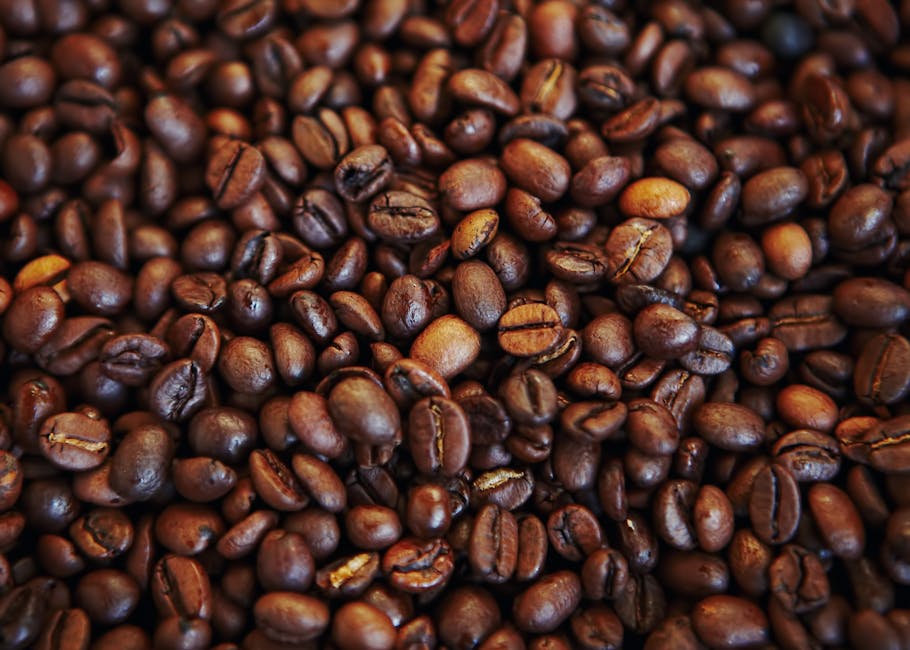Grilled vegetable skewers, a vibrant and healthy culinary delight, boast a history as rich and varied as the vegetables themselves. While pinpointing an exact origin is difficult, the practice of grilling vegetables on skewers dates back centuries, likely originating independently in numerous cultures around the globe. Ancient civilizations, from the Greeks and Romans who enjoyed grilled meats and vegetables, to various cultures in the Middle East and Asia, utilized similar methods of cooking over open flames. The use of skewers facilitated even cooking and easy handling, making it a practical and efficient method long before modern grilling technology.
The cultural significance of grilled vegetables varies widely. In Mediterranean cuisine, for instance, skewers laden with tomatoes, peppers, zucchini, and onions are a staple, often marinated in olive oil and herbs, reflecting the region’s emphasis on fresh, simple ingredients. In many parts of the world, grilling vegetables on skewers is associated with summer celebrations and outdoor gatherings, representing a convivial and communal aspect of food preparation and enjoyment. The global popularity of grilling is reflected in the staggering 70% of households in the United States owning a grill, according to a recent survey by the Hearth, Patio & Barbecue Association. This signifies a significant cultural embrace of this cooking method, further emphasizing the enduring appeal of grilled foods.
Today, grilled vegetable skewers have transcended their historical roots to become a globally recognized dish, adapted and enjoyed in countless variations. The versatility of the dish allows for endless combinations of vegetables and marinades, catering to diverse tastes and dietary preferences. From the simple elegance of Mediterranean-style skewers to more adventurous combinations incorporating exotic vegetables and spices, the possibilities are virtually limitless. This recipe, focusing on olive oil as a key ingredient, highlights the fundamental simplicity and inherent deliciousness of grilled vegetables, demonstrating how a few high-quality ingredients can create a truly memorable culinary experience. The healthy fats in olive oil not only enhance the flavor but also contribute to the overall nutritional benefit of the skewers.
Ingredients and Measurements
This recipe for Grilled Veggie Skewers with Olive Oil yields approximately 4 servings. The quantities can be easily adjusted to suit your needs; simply multiply or divide the ingredient amounts proportionally.
Vegetables: The beauty of these skewers lies in the versatility of vegetables you can use. Feel free to substitute based on your preferences and seasonal availability. However, it’s crucial to choose vegetables that hold their shape well during grilling. Avoid overly watery options that might fall apart.
We recommend the following quantities as a starting point:
- 1 large red bell pepper, cut into 1-inch pieces (approximately 1 1/2 cups)
- 1 large yellow bell pepper, cut into 1-inch pieces (approximately 1 1/2 cups)
- 1 zucchini, cut into 1-inch thick rounds (approximately 1 cup)
- 1 yellow squash, cut into 1-inch thick rounds (approximately 1 cup)
- 1 red onion, cut into 1-inch thick wedges (approximately 1 cup)
- 1 pint cherry or grape tomatoes (approximately 2 cups)
- Optional: 1 cup cremini mushrooms, cleaned and halved or quartered if large
Marinade/Dressing: A simple yet flavorful marinade is key to enhancing the taste of the grilled vegetables. This recipe uses a classic olive oil based marinade.
- 1/4 cup extra virgin olive oil: Choose a high-quality olive oil with a robust flavor to complement the vegetables.
- 2 tablespoons balsamic vinegar: This adds a touch of sweetness and acidity for balance.
- 1 tablespoon fresh lemon juice: Provides brightness and helps to prevent browning.
- 1 teaspoon dried oregano: A classic herb that pairs well with grilled vegetables.
- 1 teaspoon dried basil: Adds another layer of aromatic complexity.
- 1/2 teaspoon garlic powder: A subtle garlic flavor without the need for chopping fresh garlic.
- 1/4 teaspoon salt: Adjust to your taste.
- 1/4 teaspoon black pepper: Freshly ground pepper is always preferable.
Important Note: Cut all vegetables into approximately the same size to ensure even cooking. Soaking wooden skewers in water for at least 30 minutes before threading the vegetables onto them is highly recommended to prevent them from burning on the grill.
Vegetable Preparation and Cutting
The success of your grilled veggie skewers hinges on proper vegetable preparation and cutting. Uniformly sized pieces ensure even cooking and prevent some vegetables from burning before others are cooked through. We’ll be using approximately 1 pound of vegetables in total for this recipe, but feel free to adjust based on your preferences and the number of skewers you’re making.
Choosing your vegetables: Select firm, fresh vegetables. Avoid those that are bruised, wilted, or overly ripe. For this recipe, we recommend a combination of bell peppers (1 large red, 1 large yellow, or a mix of colors), zucchini (2 medium), red onion (1 medium), and cherry tomatoes (1 pint). Feel free to experiment with other vegetables like mushrooms, asparagus, or eggplant, but keep in mind their different cooking times.
Washing and Cleaning: Thoroughly wash all vegetables under cold running water. Use a vegetable brush to scrub away any dirt or debris, especially from the peppers and onions. For the zucchini, you may want to use a peeler to remove the outer skin if it appears tough. Pat all vegetables dry with paper towels. This helps them brown better on the grill.
Cutting the Vegetables: Consistency is key. Aim for roughly 1-inch pieces for all vegetables. This will ensure even cooking. Cut the bell peppers into 1-inch chunks, removing the seeds and membranes. Slice the zucchini lengthwise into 1/2-inch thick slices, then cut those slices into 1-inch pieces. Cut the red onion into 1-inch chunks. The cherry tomatoes do not require cutting.
Professional Tip: For a more visually appealing skewer, consider alternating the colors and types of vegetables. For example, you could start with a red pepper, followed by a zucchini, then a red onion, a cherry tomato, and repeat the sequence. This creates a vibrant and appetizing presentation.
Soaking (Optional): While not strictly necessary for all vegetables, soaking the wooden skewers in water for at least 30 minutes before threading prevents them from burning on the grill. This is crucial if using wooden skewers. Metal skewers do not require soaking.
Assembling the Skewers: Once your vegetables are prepped, start threading them onto the skewers. Leave a small space between each piece to allow for even heat distribution and to prevent overcrowding. Avoid overfilling the skewers, as this can make them difficult to handle and cook evenly.
With your vegetables prepared, you’re ready to move onto the next step: marinating and grilling!
Skewer Assembly
Now that your vegetables are prepped, it’s time to assemble the skewers! This step is crucial for even cooking and attractive presentation. We recommend using 12-inch metal skewers, as they’re sturdy enough to handle the vegetables and withstand the heat of the grill. Wooden skewers require pre-soaking in water for at least 30 minutes to prevent burning; however, metal skewers are preferable for grilling because they conduct heat more efficiently, leading to more even cooking.
Vegetable Selection and Order: The key to visually appealing and evenly cooked skewers is thoughtful arrangement. Begin by considering the size and cooking time of each vegetable. Larger, denser vegetables like zucchini and bell peppers will take longer to cook than cherry tomatoes or mushrooms. To ensure even cooking, alternate larger and smaller vegetables on each skewer. For example, you could start with a chunk of zucchini, followed by a cherry tomato, then a bell pepper piece, a mushroom, and so on. This prevents some vegetables from overcooking while others remain undercooked.
Quantity and Spacing: Aim for approximately 10-12 pieces of vegetables per skewer. Don’t overcrowd the skewers; leave a small gap (about ½ inch) between each vegetable piece. Overcrowding will hinder even cooking and may cause the vegetables to stick together. This spacing also allows for better heat penetration and browning.
Secure Placement: Once you’ve arranged the vegetables, gently push them firmly onto the skewer, ensuring they are secure. Avoid pushing too hard, as this could damage the vegetables or cause them to break. If using a metal skewer, consider leaving a small space at both ends of the skewer to allow for easier handling with tongs during grilling.
Variety and Aesthetics: Feel free to experiment with different vegetable combinations and colors for a visually appealing result. Consider using a mix of red, yellow, and orange bell peppers, along with green zucchini and yellow squash for vibrant skewers. Aim for a balanced and colorful arrangement to make your skewers a feast for the eyes as well as the palate.
Pre-Grilling Tip: Before placing the skewers on the grill, lightly brush them with the olive oil mixture you prepared earlier. This will help prevent sticking and enhance the flavor of the vegetables. Remember to have all your skewers assembled before you start grilling to maintain a smooth and efficient cooking process.
Marinade Preparation (if applicable)
While grilled veggie skewers are delicious on their own, a marinade can elevate their flavor profile significantly. This section details a vibrant and flavorful marinade perfect for enhancing your skewers. Feel free to adjust quantities based on the amount of vegetables you’re using, aiming for approximately 1/4 cup of marinade per pound of vegetables.
For this recipe, we’ll create a bright and herbaceous marinade using olive oil as its base, complementing the natural flavors of the grilled vegetables. This marinade is designed to be both flavorful and healthy, avoiding overly sugary or salty additions.
Ingredients:
- 1/2 cup extra virgin olive oil – Choose a high-quality olive oil with a fruity aroma for the best flavor.
- 2 tablespoons lemon juice – Freshly squeezed lemon juice is preferred for its superior taste and acidity.
- 1 tablespoon red wine vinegar – Adds a touch of tanginess and depth. You can substitute with balsamic vinegar for a sweeter profile.
- 2 cloves garlic, minced – Freshly minced garlic provides the best flavor.
- 1 teaspoon dried oregano – Adds an earthy, Mediterranean touch. Fresh oregano can be substituted (use about 2 tablespoons).
- 1/2 teaspoon dried thyme – Complements the oregano beautifully. Fresh thyme can also be used (use about 1 tablespoon).
- 1/4 teaspoon salt – Adjust to your taste preference.
- 1/4 teaspoon black pepper – Freshly ground black pepper is recommended.
Instructions:
In a medium-sized bowl, whisk together the olive oil, lemon juice, red wine vinegar, minced garlic, oregano, thyme, salt, and pepper until well combined. Ensure all the ingredients are thoroughly emulsified for even flavor distribution.
Important Considerations:
Marinating time is crucial. For optimal flavor penetration, marinate your vegetables for at least 30 minutes. For tougher vegetables like zucchini or bell peppers, marinating for 1-2 hours is recommended. Avoid marinating for longer than 4 hours, as this can result in overly soft vegetables. If using delicate vegetables like cherry tomatoes, add them to the skewers just before grilling to prevent them from becoming mushy.
After marinating, reserve any remaining marinade. This can be used as a flavorful basting sauce during grilling or as a delicious dressing for your finished skewers.
Grilling Techniques for Perfect Veggie Skewers
Grilling veggie skewers successfully hinges on a few key techniques. Proper preparation and consistent heat management are crucial for achieving tender, perfectly charred vegetables without burning them. Let’s explore the process step-by-step.
Prepare your grill: Begin by preheating your grill to medium-high heat (approximately 375-400°F or 190-200°C). A clean grill grates are essential for preventing sticking and imparting unwanted flavors. Lightly oil the grates with a high-heat oil, such as canola or grapeseed oil, using a paper towel to avoid excessive oil. Avoid using olive oil for greasing the grill directly as its low smoke point can lead to burning and an unpleasant taste.
Oil your skewers: Before placing your skewers on the grill, lightly brush them with olive oil. This helps prevent sticking and promotes even browning. Approximately 1-2 tablespoons of olive oil should suffice for a batch of 4-6 skewers, depending on their size.
Grilling time and rotation: Place the skewers on the preheated grill, ensuring they are not overcrowded. Overcrowding will lower the grill temperature and lead to uneven cooking. Leave about 1/2 inch of space between each skewer. Grill for approximately 3-5 minutes per side, or until the vegetables are tender and slightly charred. Regularly rotate the skewers to ensure even cooking and prevent burning. Thicker vegetables like zucchini or bell peppers may require slightly longer cooking times than smaller vegetables like cherry tomatoes or mushrooms.
Monitoring for doneness: The best way to determine doneness is by checking the vegetables’ texture. They should be tender but still retain a slight bite. Overcooked vegetables will become mushy. Use tongs to gently lift a skewer and check the vegetables’ tenderness. If needed, adjust the grill heat accordingly. Reduce the heat to medium if the vegetables are browning too quickly.
Finishing touch: Once the vegetables are cooked to your liking, remove the skewers from the grill and let them rest for a couple of minutes before serving. This allows the juices to redistribute, resulting in more flavorful and tender skewers. You can also add a final drizzle of olive oil and a sprinkle of herbs or spices for an extra burst of flavor.
Important Note: Cooking times will vary depending on the type and size of vegetables used, the heat of your grill, and your desired level of doneness. Always monitor your skewers closely and adjust the cooking time as needed.
Checking for Doneness
Determining the perfect doneness for your grilled veggie skewers is crucial for achieving a delicious and appealing final product. Overcooked vegetables will be mushy and lose their vibrant color and flavor, while undercooked vegetables will be tough and potentially unsafe to eat. The key is to achieve a tender-crisp texture, retaining a slight bite.
The cooking time will vary depending on the type and size of your vegetables, the heat of your grill, and the thickness of your skewers. As a general guideline, expect to grill your skewers for 10-15 minutes, turning them every 3-5 minutes to ensure even cooking. However, don’t rely solely on time; visual and tactile cues are essential for accurate doneness assessment.
Visual cues are your first indicator. Look for the vegetables to have softened slightly and developed grill marks. The colors should be intensified; for example, bell peppers should have deepened in their red, yellow, or orange hues, and zucchini should exhibit a slightly caramelized appearance. Avoid charring, which can impart a bitter taste. If the vegetables are starting to blacken, reduce the heat or move them to a cooler part of the grill.
Tactile cues are equally important. Use tongs to gently press on the vegetables. They should offer a slight resistance, indicating they are tender-crisp. Avoid pressing too hard, as this can damage the vegetables. If they feel very firm and offer significant resistance, they need more grilling time. Conversely, if they feel mushy or easily pierce with a fork, they are overcooked.
Consider using a meat thermometer for more precise results, particularly if you’re unsure about doneness. While not strictly necessary for vegetables, a thermometer can be helpful, especially with thicker vegetables like eggplant or onions. Aim for an internal temperature of around 190-200°F (88-93°C) for most vegetables. However, remember that different vegetables have slightly different optimal doneness temperatures, so research specific vegetables if needed.
Finally, trust your senses. Smell the skewers; they should have a pleasant, slightly smoky aroma. If in doubt, err on the side of slightly undercooked rather than overcooked. Remember, you can always grill the skewers for a bit longer if needed, but you can’t reverse overcooking.
By combining visual inspection, tactile assessment, and potentially the use of a thermometer, you’ll confidently achieve perfectly grilled veggie skewers every time.
Recommendations
For optimal flavor, marinate your vegetables for at least 30 minutes, or even up to overnight in the refrigerator. This allows the olive oil and any added herbs or spices to penetrate the vegetables, resulting in a more flavorful and tender final product. Experiment with different marinades – balsamic vinegar, lemon juice, or even a touch of honey can add delicious complexity.
Don’t overcrowd the grill. Overcrowding prevents even cooking and can lead to steaming rather than grilling. Work in batches if necessary, ensuring each skewer has ample space for proper browning. Maintain medium-high heat for best results.
Serving suggestions are plentiful! Grilled veggie skewers are a fantastic addition to any summer meal. They’re delicious served alongside grilled meats like chicken or fish, making a complete and balanced protein-rich meal. They also pair beautifully with salads, quinoa, couscous, or rice. Consider serving them with a dollop of hummus or tzatziki for an extra creamy and flavorful element.
Storage: Leftover skewers can be stored in an airtight container in the refrigerator for up to 3 days. Reheat gently in a pan or on the grill until warmed through. Avoid microwaving, as this can make the vegetables soggy.
Nutritional Information (per serving, approximate): The exact nutritional content will vary based on the specific vegetables used and the amount of olive oil. However, a typical serving of grilled veggie skewers (approximately 150g) may contain around 150-200 calories, with a good source of vitamins, minerals, and fiber. They are relatively low in fat and saturated fat, making them a healthy and delicious meal option. Always check the nutritional information of your specific ingredients for a more accurate calculation.
Complementary Dishes: To create a well-rounded meal, consider pairing your grilled veggie skewers with a light and refreshing salad such as a Greek salad or a simple green salad with a vinaigrette dressing. A side of crusty bread is also a great way to soak up any delicious marinade. For a heartier meal, serve them with grilled halloumi cheese or a grain bowl with your favorite grains and a flavorful sauce.





